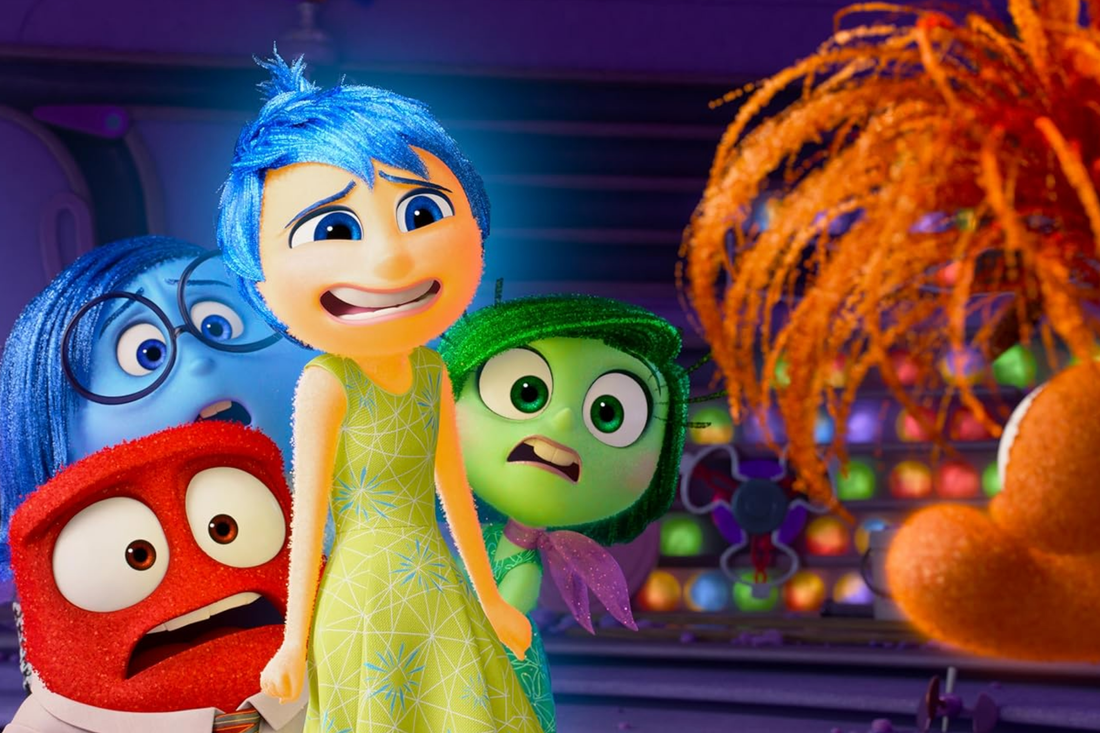
As a 30-something who grew up watching Pixar movies and feeling a deep connection to their stories, I have to say that Inside Out 2 left me feeling a bit disheartened. Having been a teenager myself not too long ago, I found the portrayal of Riley’s struggles during her hockey camp to be painfully accurate, yet the inner world felt more like an intrusion than an enhancement.
The following review was posted on June 12, 2024. By now, as of September 25, Disney+ has made Inside Out 2 available for streaming.
As I watched Pixar’s latest offering, “Inside Out 2“, a thought repeatedly surfaced in my mind. Could it be that the array of emotions personified within the protagonist, our young heroine, symbolize her burgeoning self-awareness? Or is there some sort of control being exerted over her by the endearing characters that inhabit her mind, making her akin to a giant robot disguised as a 13-year-old girl, with these emotions serving as her controllers at any given moment?
In my perspective as an ardent fan, the original “Inside Out” was undeniably delightful with its blend of humor and poignant coming-of-age storytelling, focusing on Riley’s challenges adapting to life in San Francisco after moving from Minnesota. However, the sequel, for me, veered into a more surreal territory.
As a movie enthusiast, I find myself pondering about Pixar these days. Recently, Pete Docter, the filmmaker and chief creative officer, made headlines following comments in a Bloomberg Businessweek feature. He hinted at a shift for the studio where movies would no longer be driven by individual catharsis but instead aim to address universal experiences. This sparked some controversy, possibly due to it being perceived as a step back from their recent focus on diversity among characters and creators.
In the movie, Joy (portrayed by Amy Poehler), Sadness (Phyllis Smith), Anger (Lewis Black), Fear (Tony Hale), and Disgust (Liza Lapira) are expressive, goofy, and their appearance resembles Muppets. This is further emphasized by the doll-like quality of their hair and the soft, fuzzy edges of their figures. The new emotions introduced in the film, such as Anxiety (Maya Hawke), who shares a likeness with Pepe the King Prawn, Envy (Ayo Edebiri), her petite companion, Embarrassment (Paul Walter Hauser), who’s pink and oversized with a constant desire to hide under his hoodie, and Ennui (Adèle Exarchopoulos), who lounges languidly over her phone, also make an appearance. Although the new group lacks distinctiveness, particularly Envy, they are adorable, vibrant, and marketable. They manage to displace the original emotions from Headquarters, where Riley’s daily affairs are managed.
The ordeal Riley undergoes, leaving the Vault filled with her hidden secrets, journeying deep into her mind to rediscover her past identity, seems pointless and unimportant. However, when we finally glimpse into Riley’s life, it becomes evident that the inner world falls short in supporting her struggles.
It seems there’s a sense of “sequel fatigue” in this movie, made more noticeable by the replacement of Bill Hader and Mindy Kaling, who originally voiced Fear and Disgust, with new actors. The character Bloofy (voiced by Ron Funches), resembles Bing Bong but without the heavy emotional baggage. The story now takes us on another journey through Riley’s brain, this time traversing landscapes filled with more and more obvious puns. In the first movie, there was a brief joke about a big red button labeled “Puberty,” but in this sequel, they delve deeper into that concept, almost overdoing it. Pixar recently produced a good film, Turning Red, which explored the complexities of adolescence. However, what keeps Inside Out 2 from matching that film’s depth is its own format, which, given the subject matter, has become too constrictive.
In the movie “Inside Out 2”, Riley’s character appears to be overly controlled by the emotional aspects portrayed within, giving an impression that these emotions have been artificially imposed rather than naturally evolving from her personal journey as a new teenager. This results in Riley feeling less like a fully developed character and more like a puppet being manipulated, rather than taking charge of her own struggles with fitting in and self-doubt. The film’s creators seem to have lost touch with the authentic emotional depth that was present in the original movie.
Read More
- COW PREDICTION. COW cryptocurrency
- SUI PREDICTION. SUI cryptocurrency
- KSM PREDICTION. KSM cryptocurrency
- WLD PREDICTION. WLD cryptocurrency
- W PREDICTION. W cryptocurrency
- AAVE PREDICTION. AAVE cryptocurrency
- Best Strinova Sensitivity Settings
- Clash Royale: Is It Really ‘Literally Unplayable’?
- FutureNet Co-Founder Roman Ziemian Arrested in Montenegro Over $21M Theft
- What Persona Fans Hope to See in Persona 6 and What Might Disappoint
2024-09-25 18:53